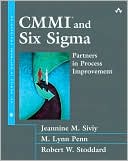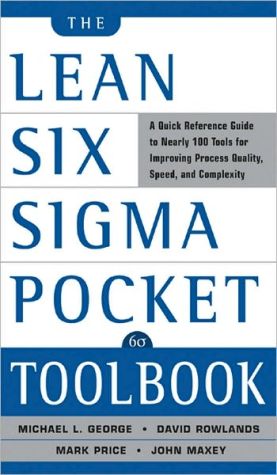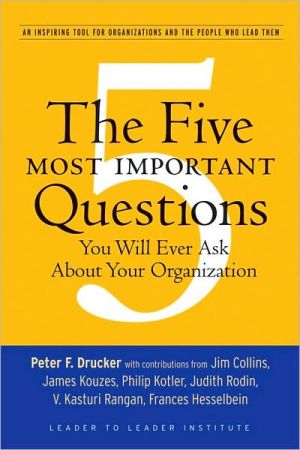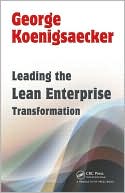CMMI and Six Sigma: Partners in Process Improvement
Search in google:
CMMI and Six Sigma represent two of the best-known process improvement initiatives. Both are designed to enhance work quality and thereby produce business advantages for an organization. It's a misconception that the two are in competition and cannot be implemented simultaneously. Practitioners originally trained in either CMMI or Six Sigma are now finding that the two initiatives work remarkably well together in the pursuit of their common goal. CMMI® and Six Sigma: Partners in Process Improvement focuses on the synergistic, rather than competitive, implementation of CMMI and Six Sigma – with synergy translating to "faster, better, cheaper" achievement of mission success. Topics range from formation of the value proposition to specific implementation tactics. The authors illustrate how not taking advantage of what both initiatives have to offer puts an organization at risk of sinking time, energy, and money into "inventing" a solution that already exists. Along the way they debunk a few myths about Six Sigma applications in software. While the authors concentrate on the interoperability of Six Sigma and CMMI, they also recognize that organizations rarely implement only these two initiatives. Accordingly, the discussion turns to the emerging realm of "multimodel" process improvement and strategies and tactics that transcend models to help organizations effectively knit together a single unified internal process standard. Whether you work in the defense industry, for a commercial organization, or for a government agency – wherever quality and efficiency matter – you'll find this book to be a valuable resource for bridging process issues across domains and building an improvement strategy that succeeds.
List of Figures xiii List of Tables xvii Foreword by Forrest Breyfogle xix Foreword by Jack Ferguson xxi Preface xxiii Chapter 1: Introduction 1 Chapter 2: CMMI Overview 5 2.1 CMMI at a Glance 6 2.2 Adoption and Deployment 15 2.3 Benefits 16 2.4 CMMI Adoption Myths 17 2.5 Summary 18 Chapter 3: Six Sigma Overview 19 3.1 Six Sigma at a Glance 21 3.2 Deployment 35 3.3 Applying Six Sigma to Software 37 3.4 Six Sigma Myths 39 3.5 Example Benefits 43 3.6 Summary 44 Chapter 4: Multimodel Process Improvement: The Value Proposition 45 4.1 Six Sigma as a Strategic Enabler: An Investigation 47 4.2 Summary 52 Chapter 5: Two Case Studies 55 5.1 Case Study: Lockheed Martin Integrated Systems & Solutions 55 5.2 Case Study: Motorola 75 5.3 Summary 88 Chapter 6: Integrating the CMMI and Six Sigma: Strategies 91 6.1 Sequencing Scenarios 91 6.2 Joint Implementation Strategies 93 6.3 Considerations for Staged and Continuous CMMI Representations 97 6.4 Considerations for Joint Deployment 100 6.5 Summary 105 Chapter 7: Integrating the CMMI and Six Sigma: Design Connections 107 7.1 CMMI Process Areas and Six Sigma Frameworks 107 7.2 CMMI Process Areas and the Six Sigma Toolkit of Analytical Methods 112 7.3 CMMI Project Management Process Areas and Six Sigma Project Management 112 7.4 CMMI Process Outputs as Inputs to Six Sigma and Vice Versa 113 7.5 Summary 114 Chapter 8: Multimodel Process Improvement: The General Case 115 8.1 Depiction of the Process of Process Improvement 116 8.2 Mission Translation and Project Portfolio Management 123 8.3 ModelSelection and Strategy 134 8.4 Solution Implementation: Process Architecture and Design 139 8.5 Summary 146 Chapter 9: Sustainment: Your Improvement Project Portfolio 147 9.1 Product Quality Improvement 149 9.2 Cost and Schedule Performance Improvement 158 9.3 Definition and Design of the Decision Analysis Process 172 9.4 IT Operations: Value Stream Mapping with IT Tools 176 9.5 Performance Modeling and Simulation 181 9.6 Summary 188 Chapter 10: Summary and Final Remarks 189 Appendix A: DMAIC Roadmap Guidance Questions 193 Appendix B: DMAIC and CMMI Specific Goals and Generic Practices 197 Appendix C: CMMI Process Areas and the Six Sigma Toolkit 199 Appendix D: "Six Sigma as an Enabler" Research Project: Full Report 203 Appendix E: "Six Sigma as an Enabler" Research Project: Findings, Inferences, Hypotheses 215 Appendix F: Overview of Frequently Used Six Sigma Analytical Methods 227 Appendix G: Measurement Practices 251 Appendix H: Transition Practices 261 Appendix I: Organizational Change Management 267 References 271 Additional Resources 283 Acronyms 299 About the Authors 309 Index 315








